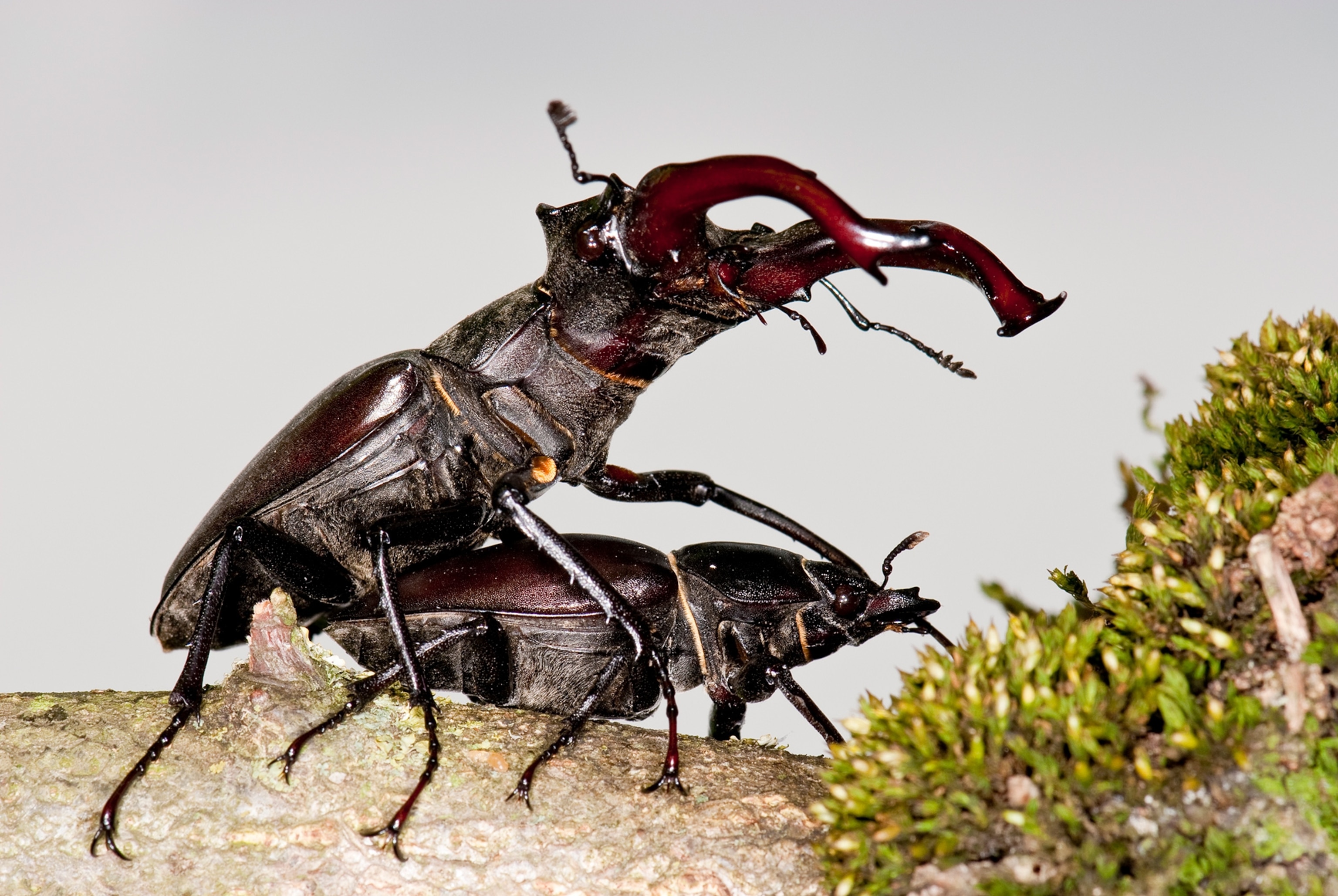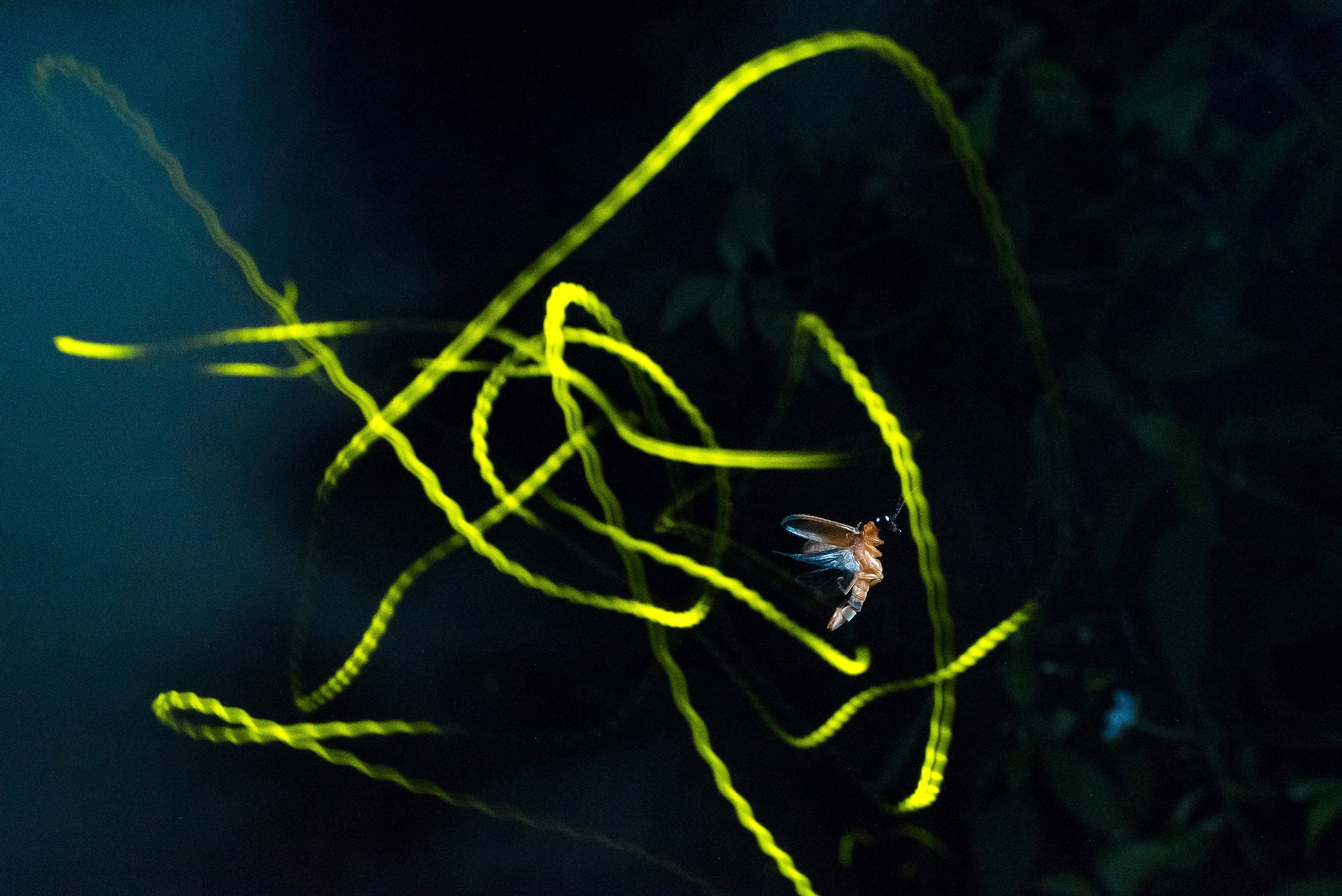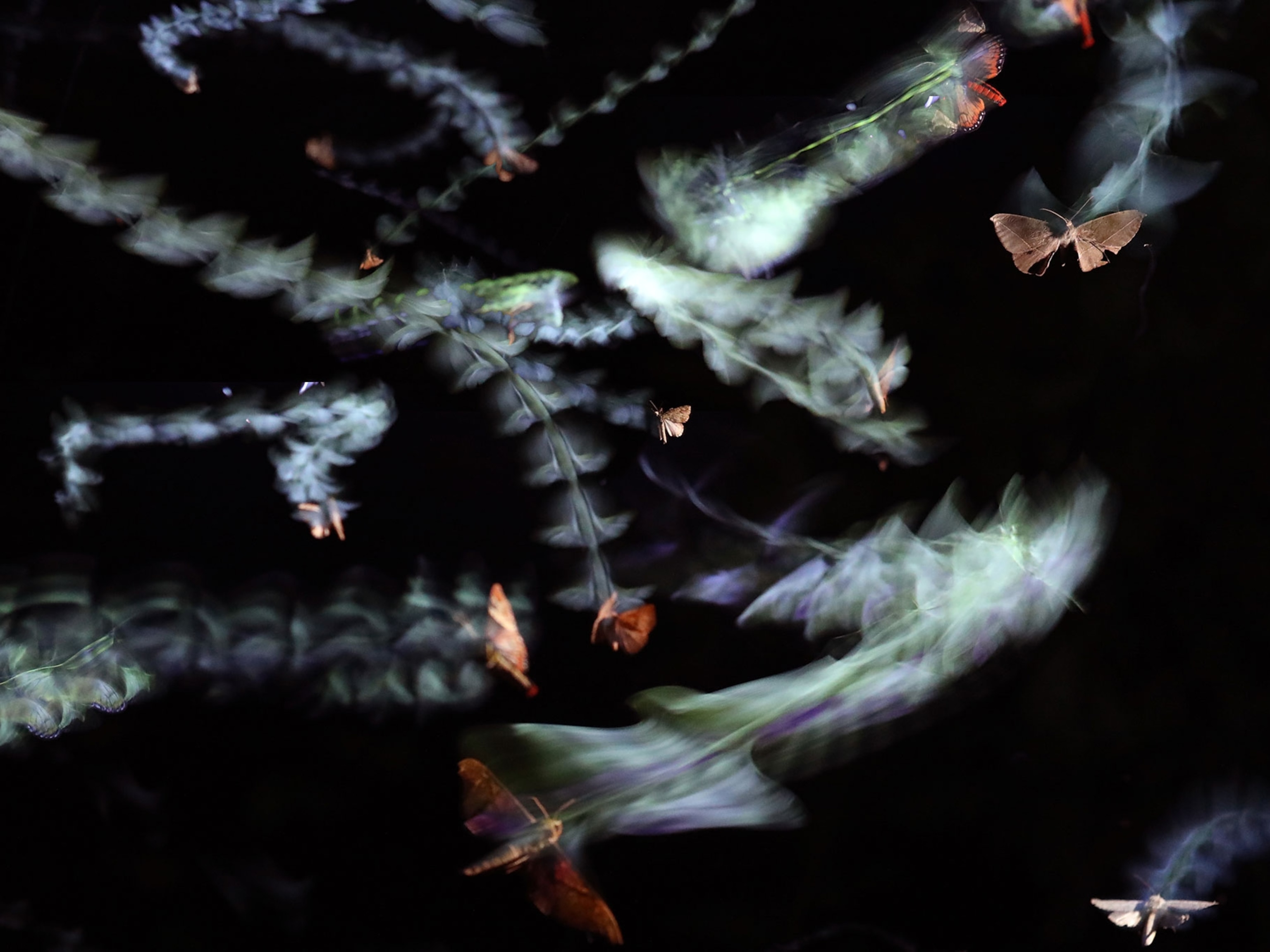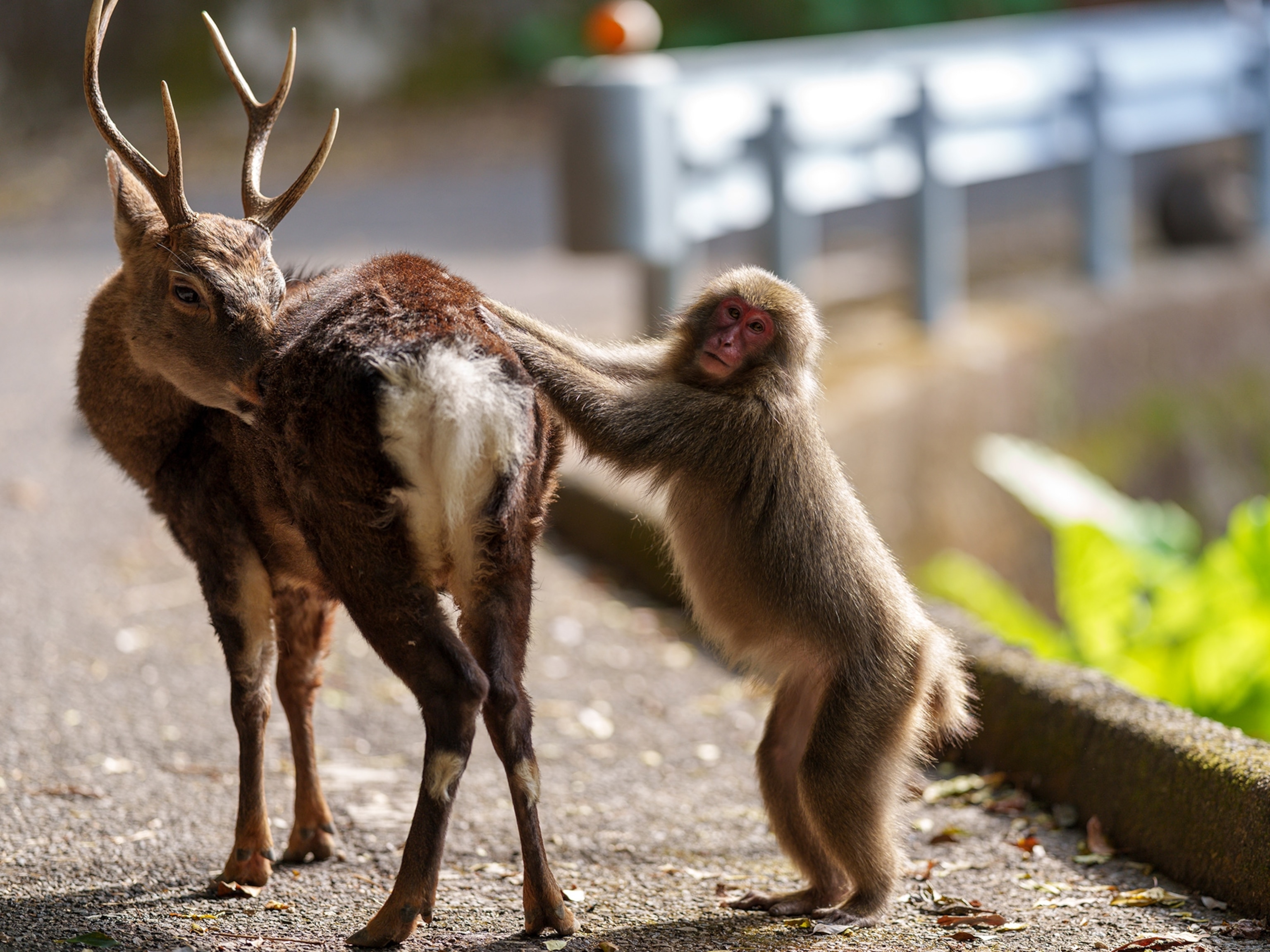Weapons, dances—and murder? Inside the wild world of bug courtship
Stag beetles have their sumo matches. Female fireflies who murder their mates. These are some of our favorite mating behaviors among insects and arachnids.

Bighorn rams clash their horns when it’s time to mate. Turkeys take a puffed-up strut around their territories. Bullfrogs bellow to one another in baritone.
You may be aware of the various ways large animals signal that they’re ready for love.
But what about all the little animals? After all, beetles, spiders, and flies have to find partners too. And just because the stage is smaller does not mean there’s any less drama.
(These ants are saving our forests—by spraying acid everywhere.)
With a new season of A Real Bug’s Life now streaming on Disney+ on January 15, we’re taking a look at some of the other fantastic and bizarre mating behaviors found in insects and arachnids.

Stag beetle sumo match
While stag beetles are armed with gigantic, medieval-looking mouthparts, when two males meet in ritual combat, neither is likely to die.
“Biologists refer to those as natural weapons,” says Ainsley Seago, associate curator of invertebrate zoology at the Carnegie Museum of Natural History in Pittsburgh. “And what’s neat about them…is that if you use them right, nobody gets hurt.”
But someone is definitely going to get flung.
Interestingly, Seago says that when male beetles square off, they’re not fighting over an individual female. Rather, they’re defending a resource, or an area where females are likely to be, such as sap flows.
(Bears seen mating in trees—a scientific first.)
“It’s a free, delicious, sugary food, which often has yeast growing on it. That combination of sugary food and delicious yeast is like a really healthy shake,” she says. “And I’m sorry I’m going to say this, but that milkshake brings all the girls to the yard.”
When multiple males want to lay claim to an area, things may come to blows. Rather than running at each other like knights with a lance, Seago says beetles will engage in something akin to a sumo wrestling match.
It’s “basically a test of strength, trying to throw the other guy off the log,” she says.

A dangerous heart-to-heart with damselflies
If you’ve ever spent time near a pond, lake, or river and seen damselflies making a heart shape with their bodies, then you’ve witnessed what scientists call the copulatory wheel.
But it may not be as romantic as you think.
To convince a female to mate, a male will first use specialized claspers to grasp the back of her head. And he will remain attached to the female even if she tries to fly away.
“Actually, it’s a form of harassment,” says Jessica Ware, curator at the American Museum of Natural History in New York City and an expert in the insect order Odonata, which includes dragonflies and damselflies.
(Termite fossils caught in the act prove mating hasn't changed in 38 million years.)
You see, every moment spent attached to a male is time the female could be feeding, laying eggs, or mating with other males. But that’s also why males do it—to make sure their genetic material is what’s used to create the next generation.
Even after a female damselfly has accepted a male and moved her abdomen into position to receive his sperm, the male may maintain his grip for half an hour or more. Sometimes, the male will even drag the female to the water’s surface and hold her underwater while she deposits her eggs on a piece of a vegetation. (While under the water, a bubble formed around the female’s head allows her to breathe.)
“I would say it’s not always voluntary,” says Ware. “Because as soon as he lets go of her, another male can come and scrape out his sperm.”
Male damselflies can be so persistent, some females in the genus Ischnura have even evolved a way to hide from them.
“Females actually change their color to look like the color of males,” says Ware.

Fireflies… or femmes fatales?
When a firefly flashes its bioluminescent backside in the night, it’s trying to signal to fireflies of the same species and opposite sex that it is single and ready to mingle.
There is no coercion. No test of strength. Not even a sound uttered. Just gentle wisps of light.
But female fireflies in the Photuris versicolor species group take advantage of all that softness.
(These birds are among the rare animals that hide to mate.)
“Their females will mimic the flashes of females from other species and lure the males over for mating,” says Seago. “When the males come over to mate with her, she will turn around and just eat him.”
Scientists believe the Photuris females, known as femme fatales, eat males of other species as a way to steal their defensive compounds, or chemicals in their blood that make fireflies taste bad to predators. (The femme fatales infuse those compounds into their eggs.)

Peacock spiders that dance their hearts out
In Australia, there’s a group of teeny-tiny arachnids known as peacock spiders. At first blush, they look like any other jumping spider. “They have the tiny spider body, kind of stocky legs…the big eyes in front of the face,” says Sebastian Echeverri, a spider scientist with the Xerces Society and author of Spiders of the United States & Canada.
“But there is something really special that happens when an adult male peacock spider spots a female,” he adds.
With a female in his sights, the male raises his rump into the air and opens it, like a brightly colored fan, turning his abdomen into a mesmerizing mini-billboard. Some peacock spider species also have raised hair-like structures on their legs, which they wave about like flag semaphore code, says Echeverri.
The colors and patterns depend on the species, as do the moves he’ll perform with his legs, but the display is nothing short of a choreographed dance number … with music! Males can also drum vibrations into the ground, which the female assesses along with the rest of the performance.
“Jumping spiders are special in that they evolved these really big eyes that can see in detail really well,” says Echeverri. “And so because of that, their courtship also evolved to use visual language, to use movement and dance and colors in a way that not many other spiders do.”








